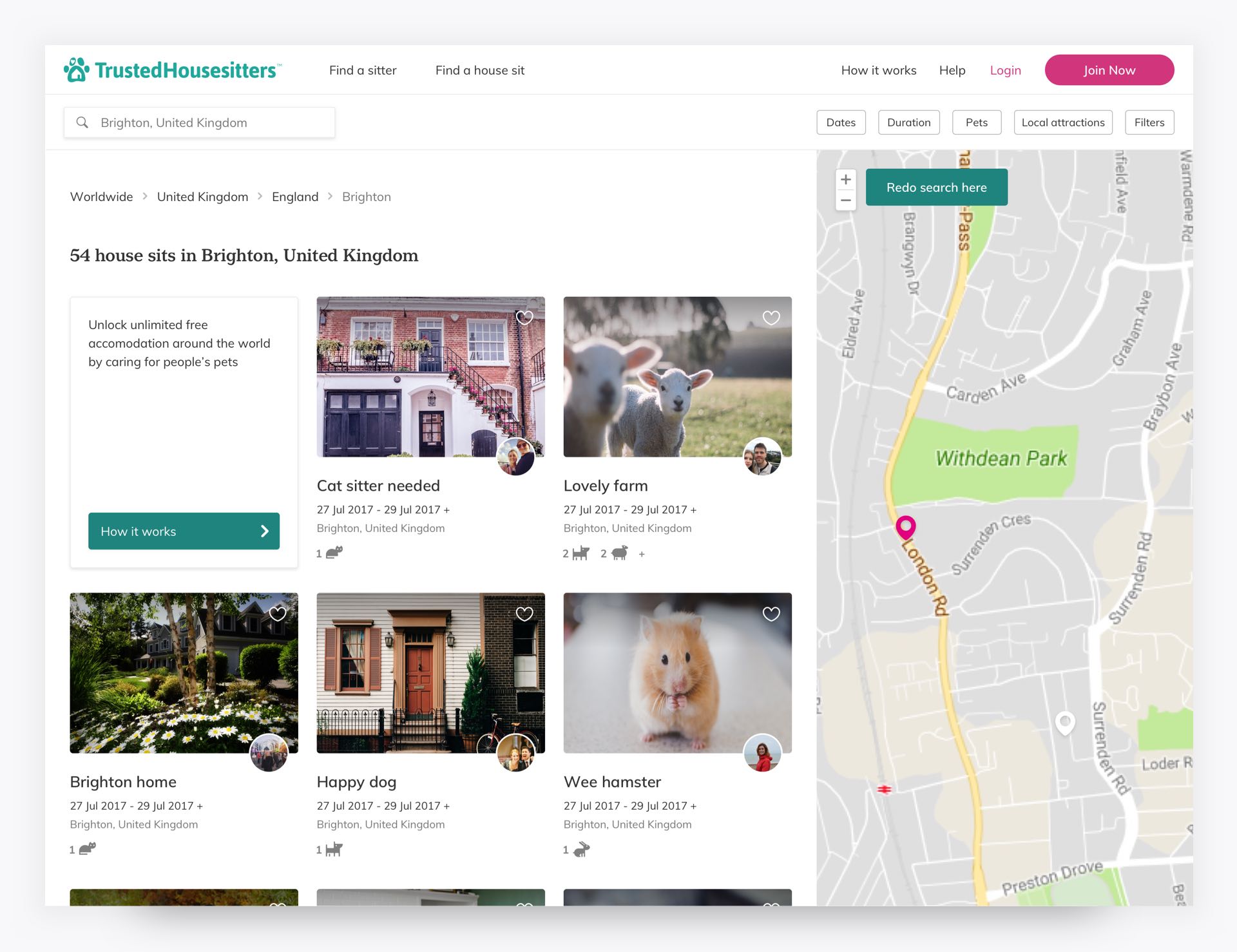

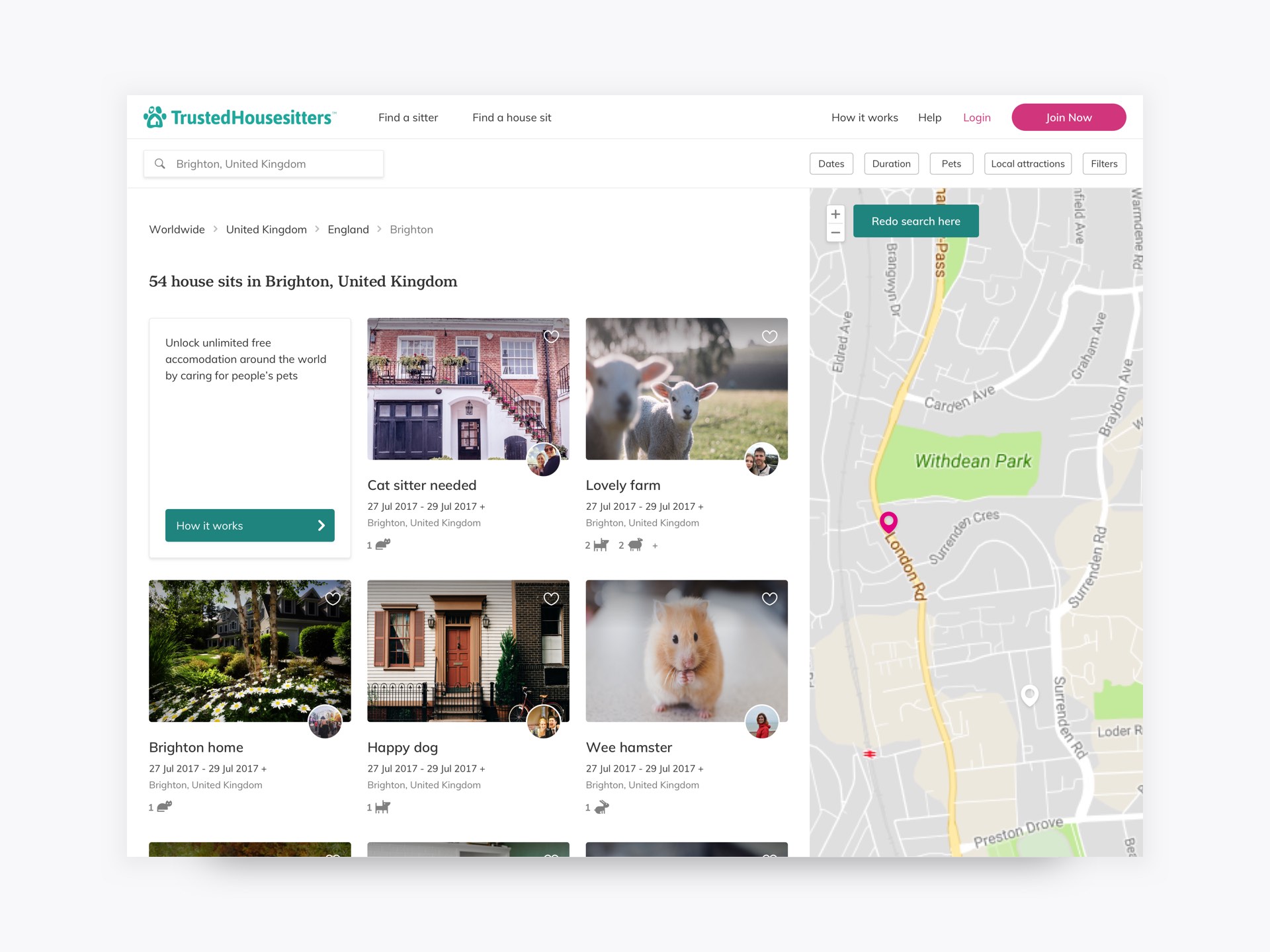
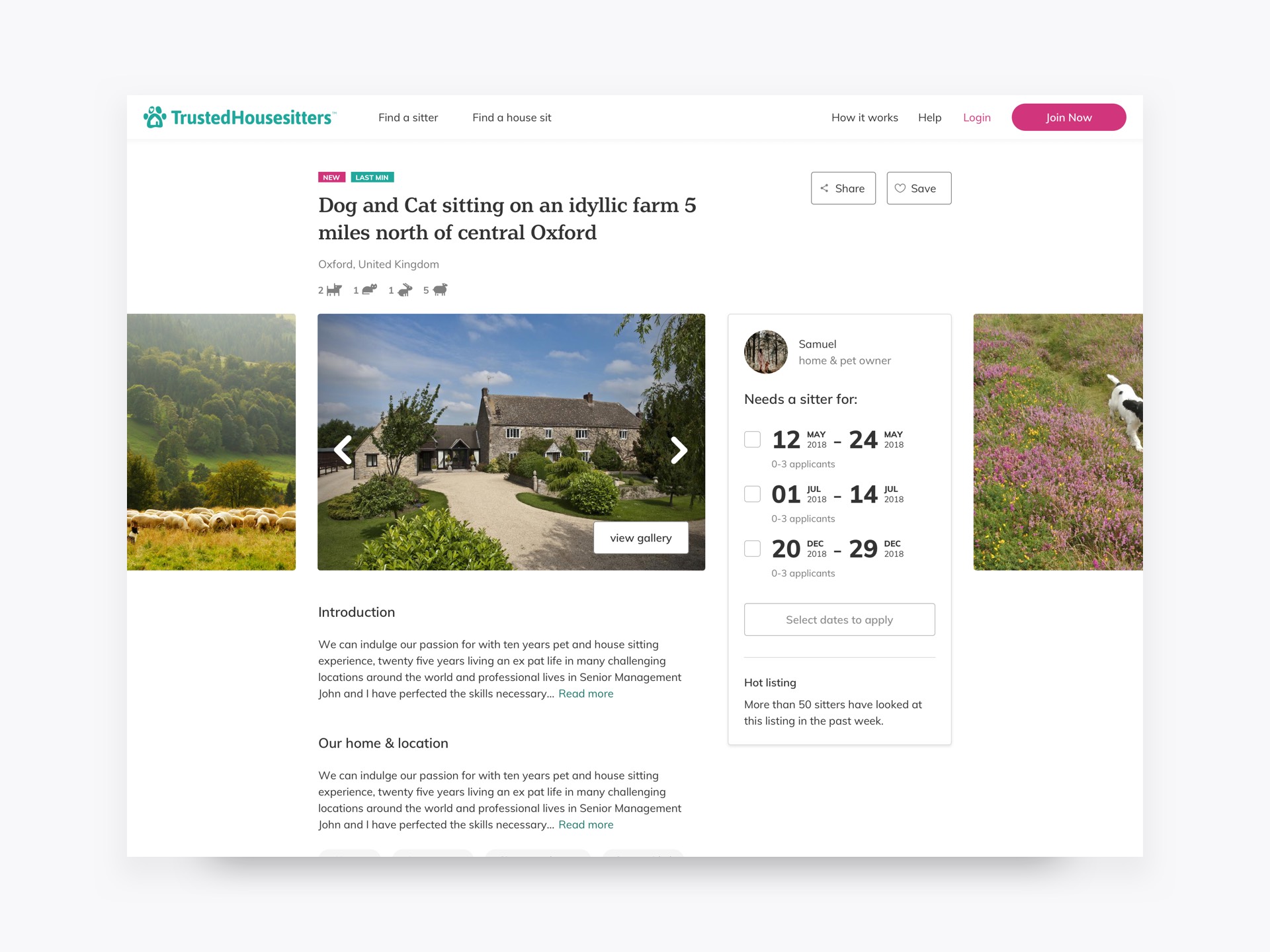
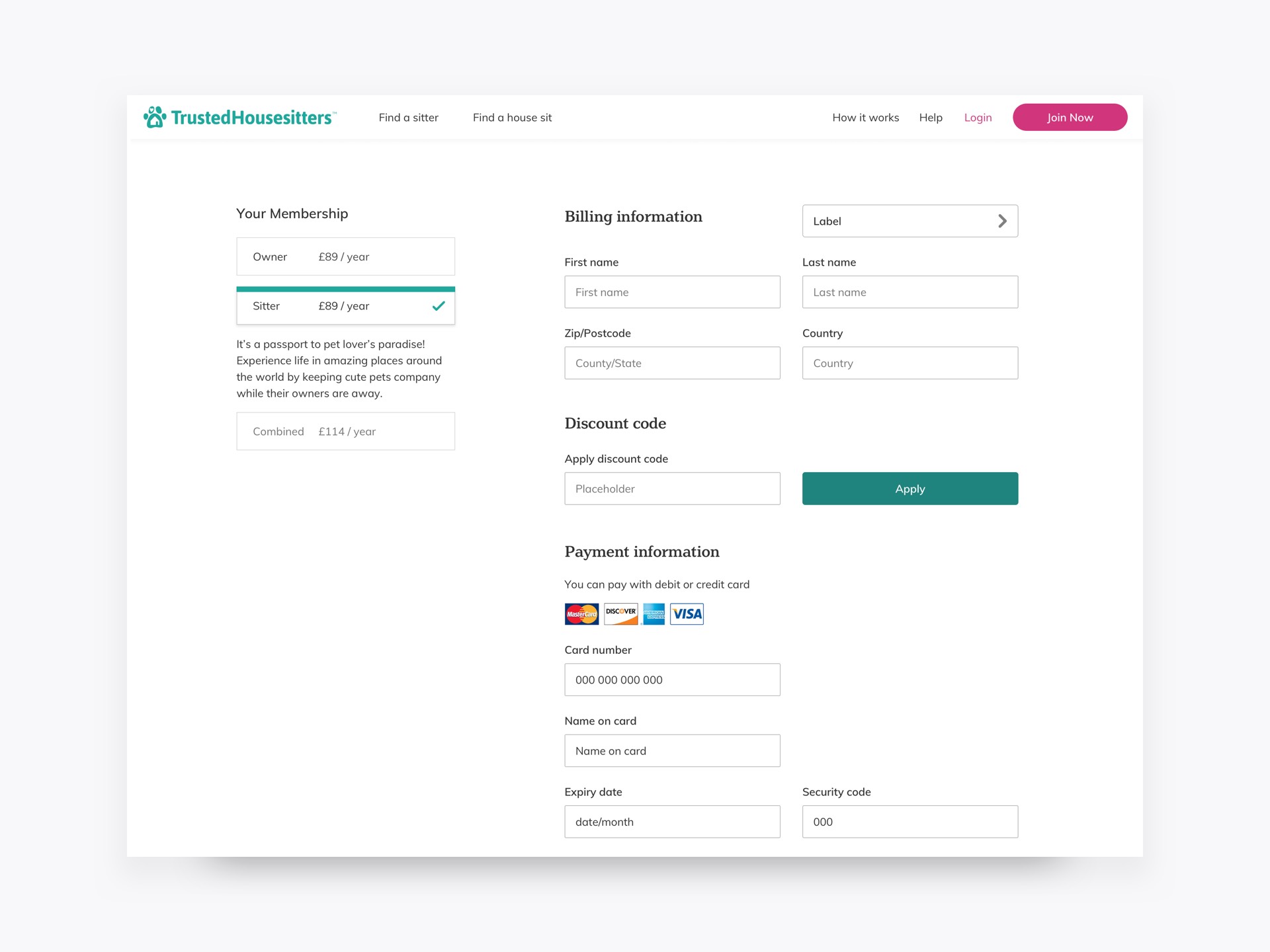
TrustedHousesitters is a house and pet sitting platform for people to look after pets in exchange for a place to stay.
User testing the webiste to gather design requirements, forming design solutions, and creating the design system.
Increase acquisition and drive our north star metric pet sits completed by improving the user journeys leading to sign-up.
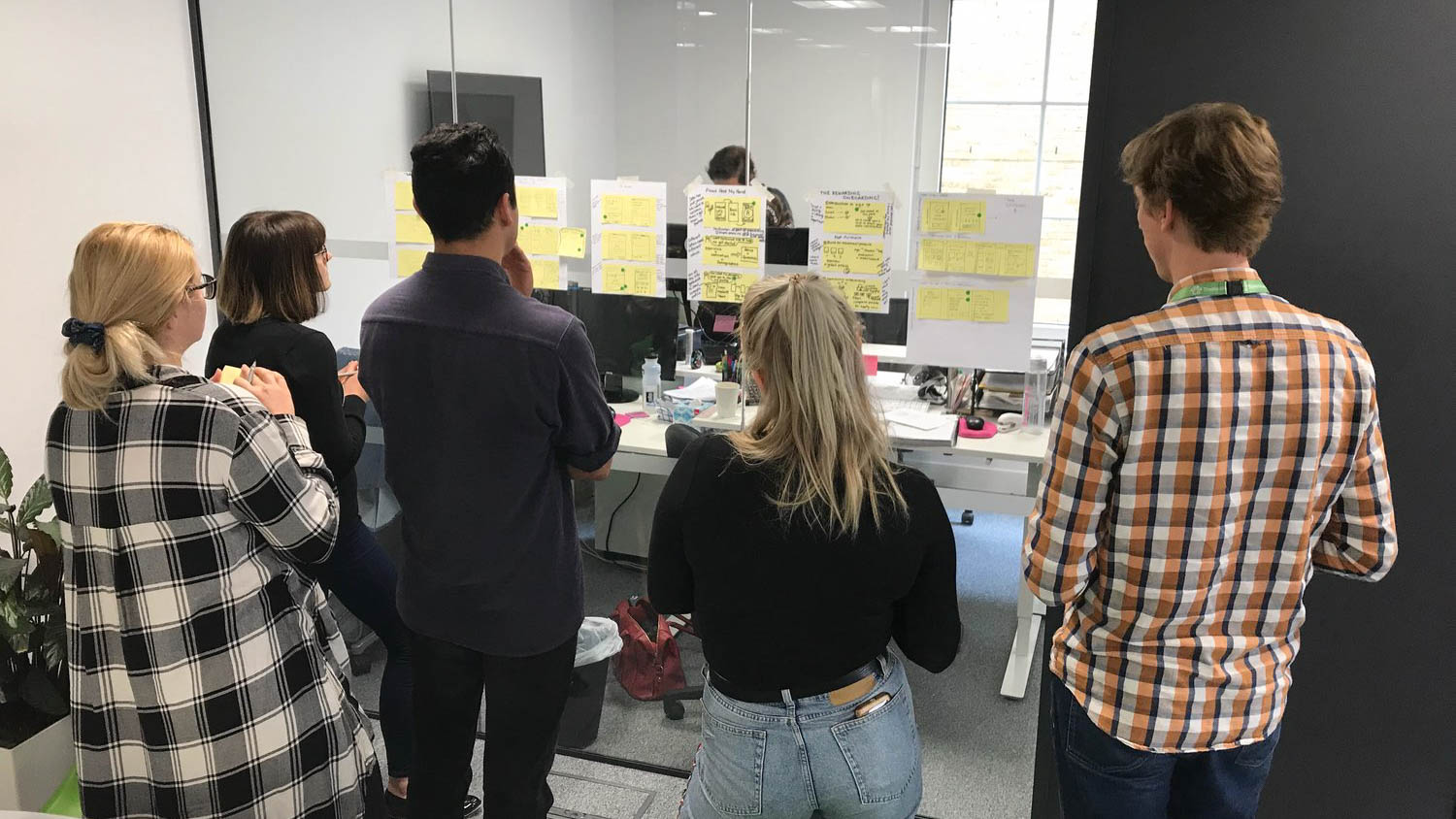
We used design thinking and a hypothesis driven design process to validate design assumptions using research and experiments.
Discover
Understand people's motivations and the problem space. Research to uncover problem areasReframe
Come up with possible solutions which answer users needs and generate ideas, define ideal state & hypothesisTest & iterate
Create prototypes, run and evaluate tests to validate hypothesis, iterate and retestUsability testing revealed that first-time visitors did not understand the service, which we assumed affected membership conversions.
No understanding
Participants did not have enough information before signing upPricing confusion
Participants thought that sitters get paid to house sitNo sense of trust
Participants didn't feel comfortable letting strangers into their homes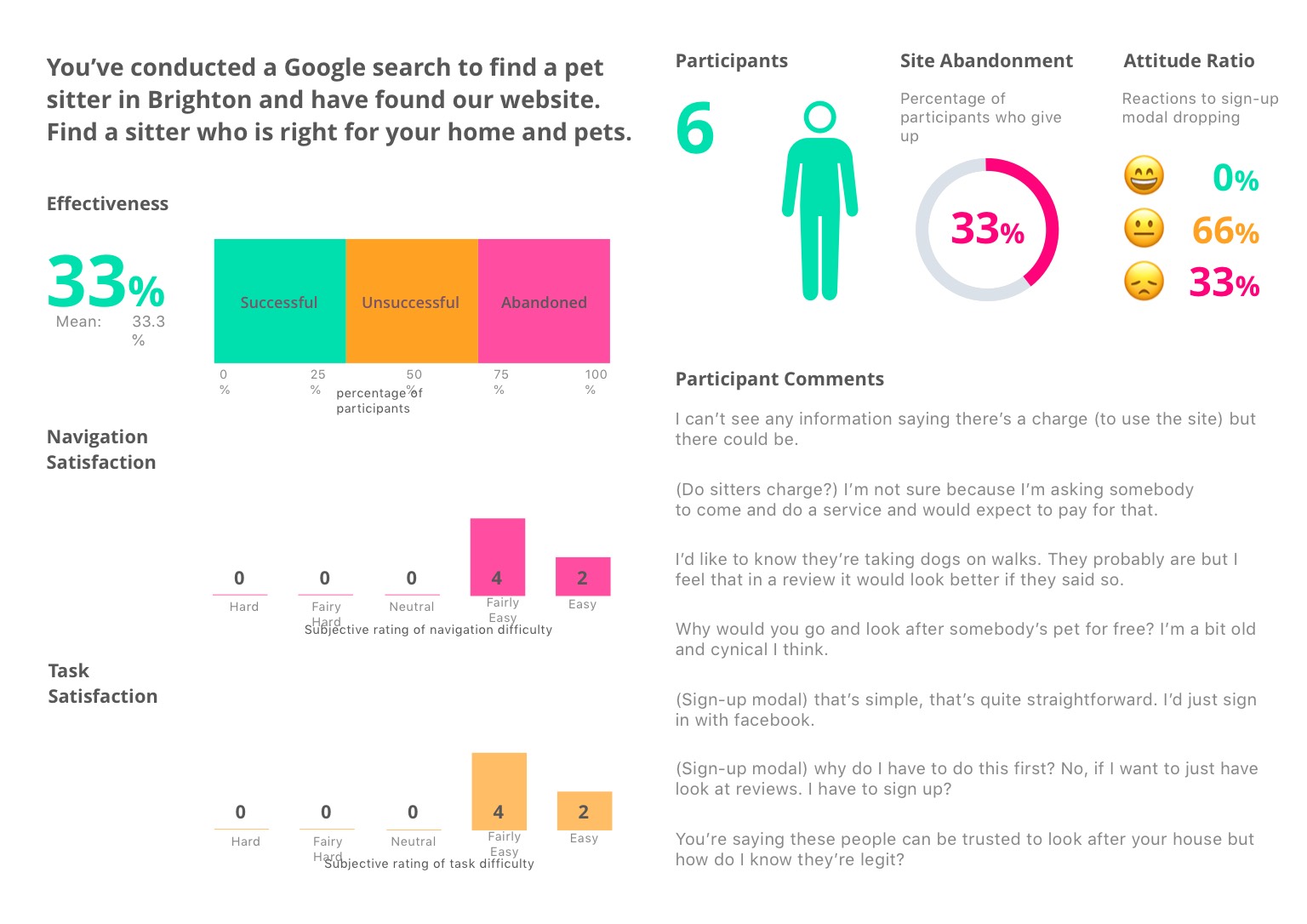
How might we get across how our service works before people go to sign-up?
Including information pieces on the sign-up modal.
We believe that including information pieces on the sign-up modal for first-time visitors will get across how our service works before we prompt people to sign-up.
The majority of participants understood that sitters petsit for free in exchange for a place to stay.
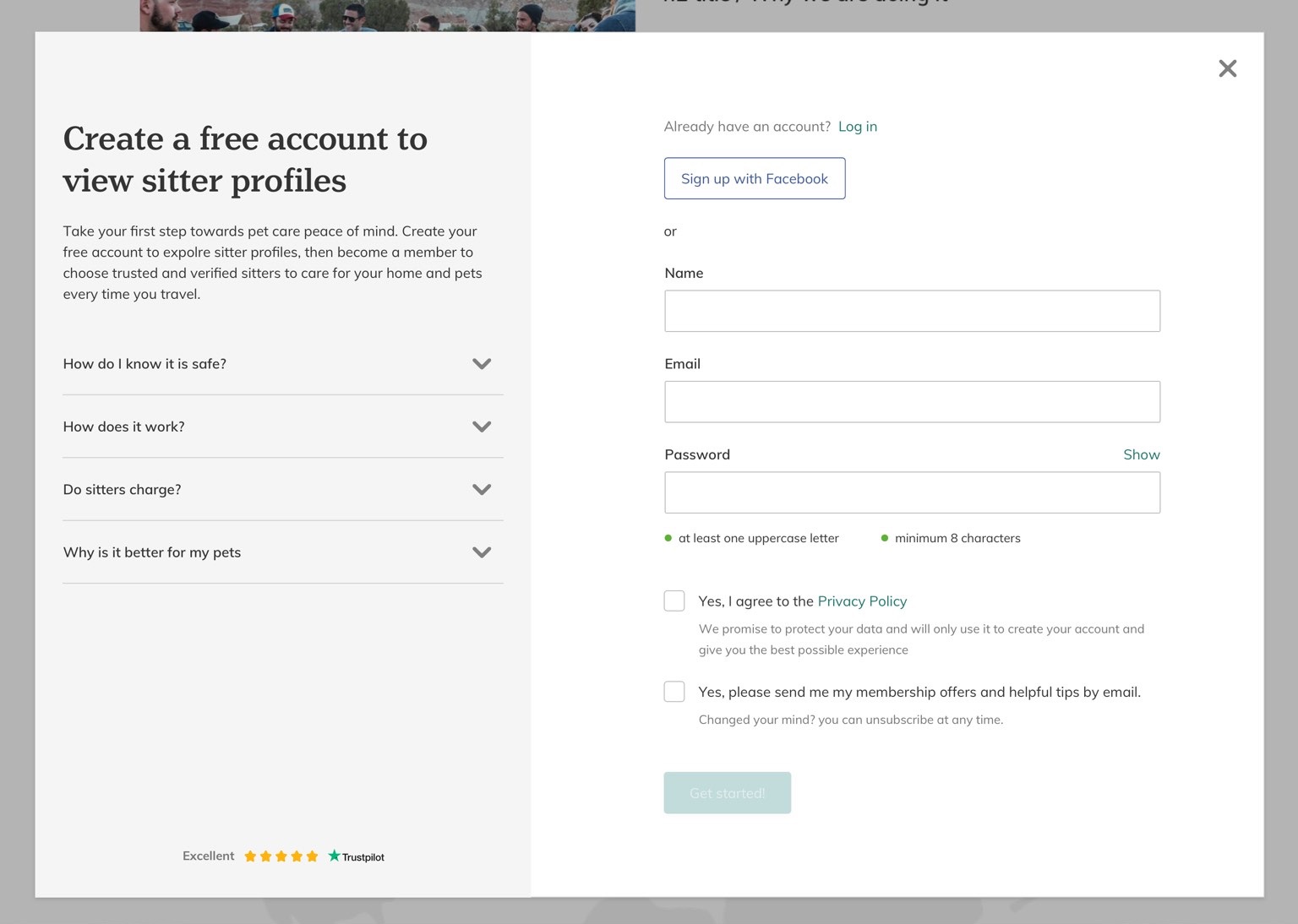
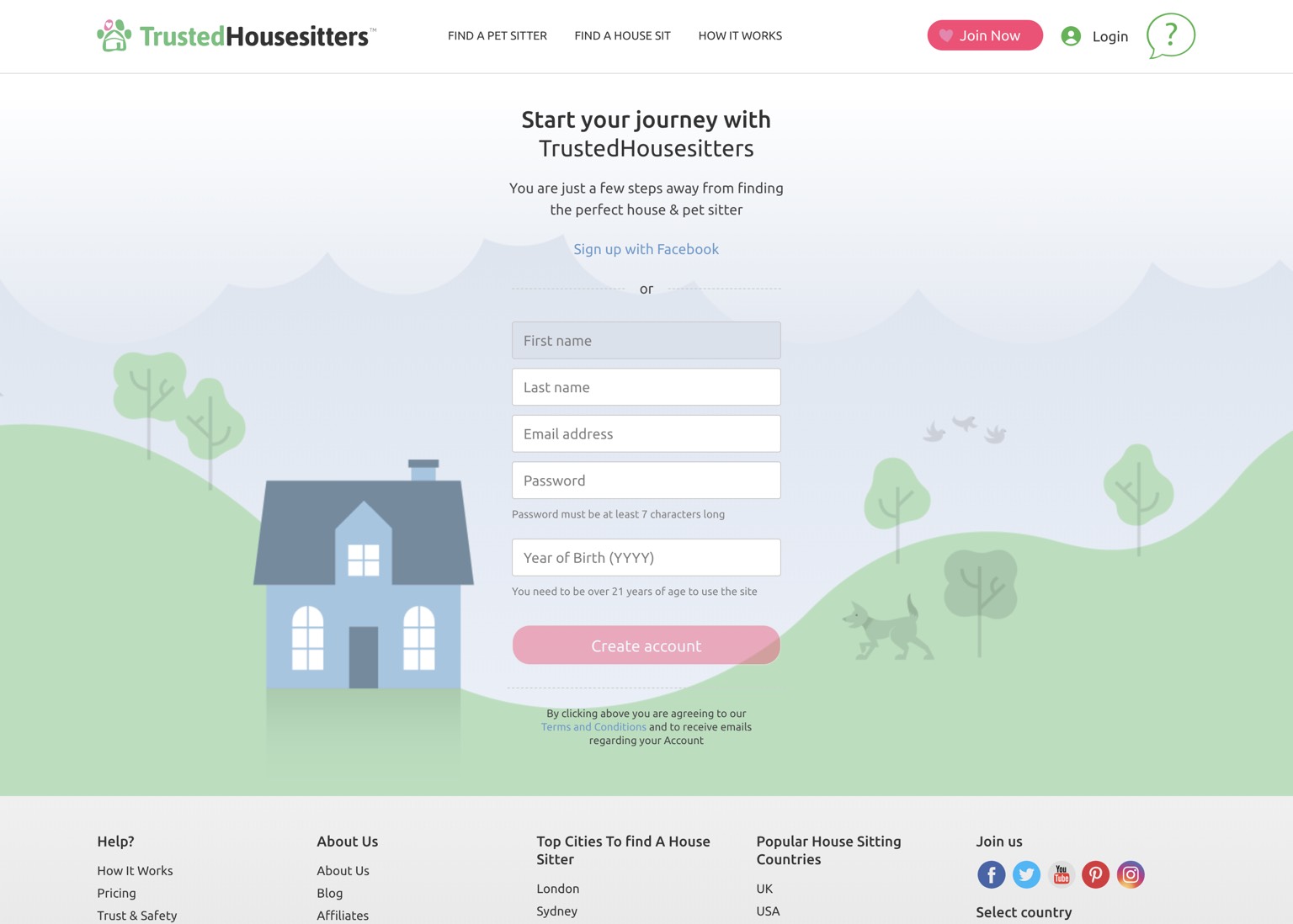
How might we explain that there is an annual membership fee and sitters pet sit for free in exchange for accommodation?
Showing information cards about our pricing model which also direct users to our how it works page. Include information about pricing on our how it works page.
We believe that showing information cards about our pricing model which also direct users to our how it works page for first-time visitors will explain there is an annual membership fee and sitters pet sit for free in exchange for accommodation.
The majority of usability research participants understood that there is an annual membership fee and sitters petsit for free.
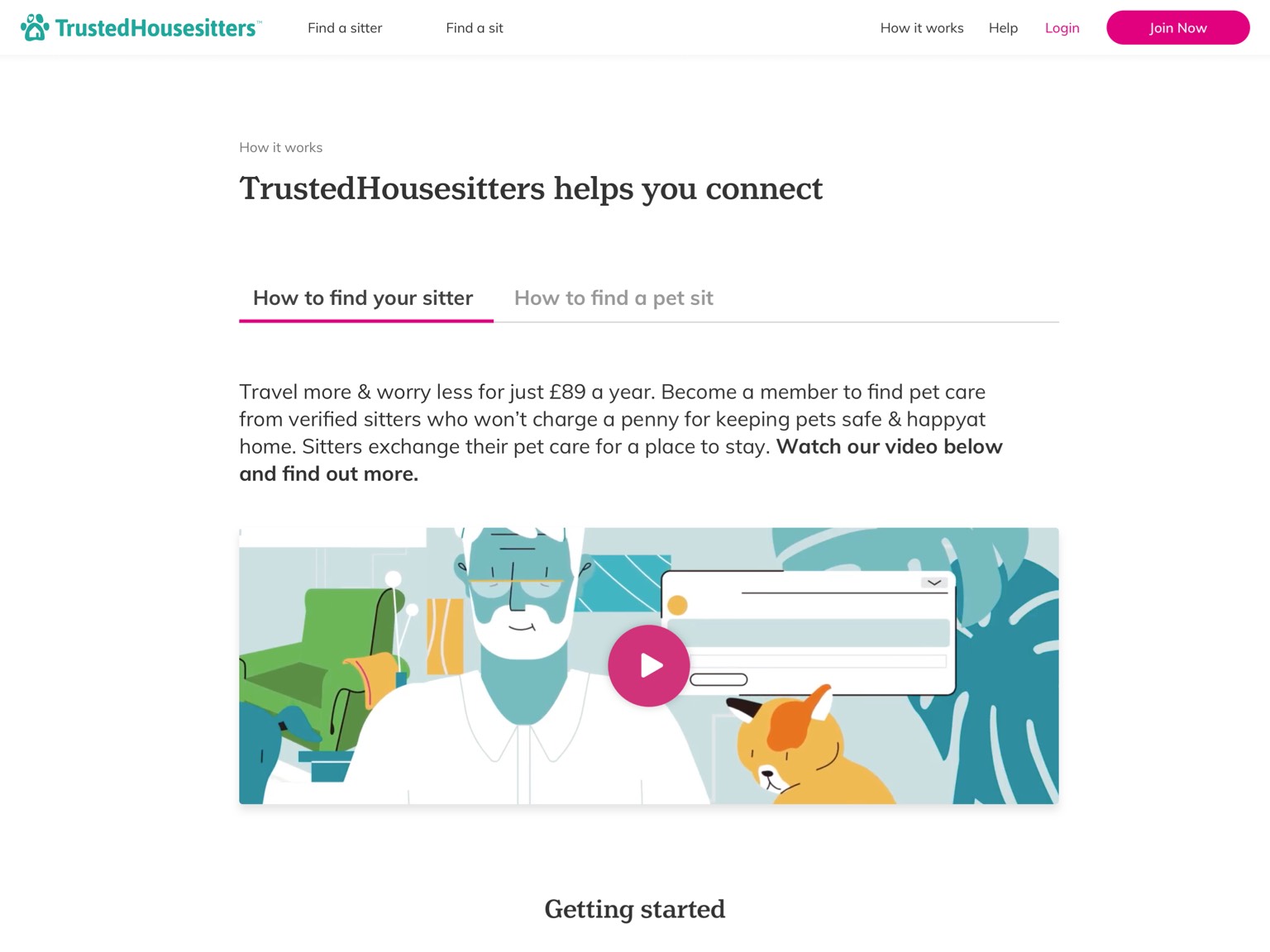
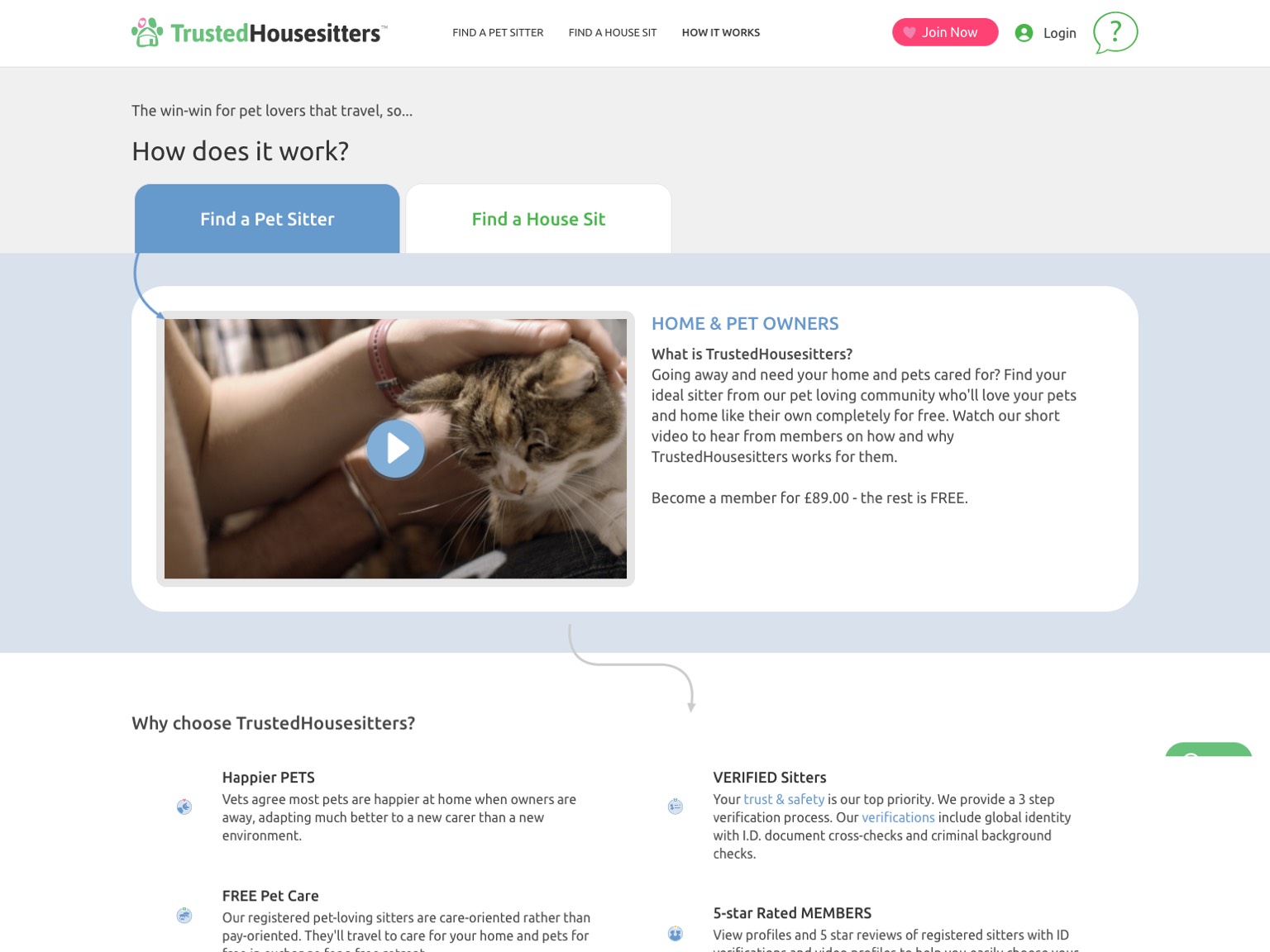
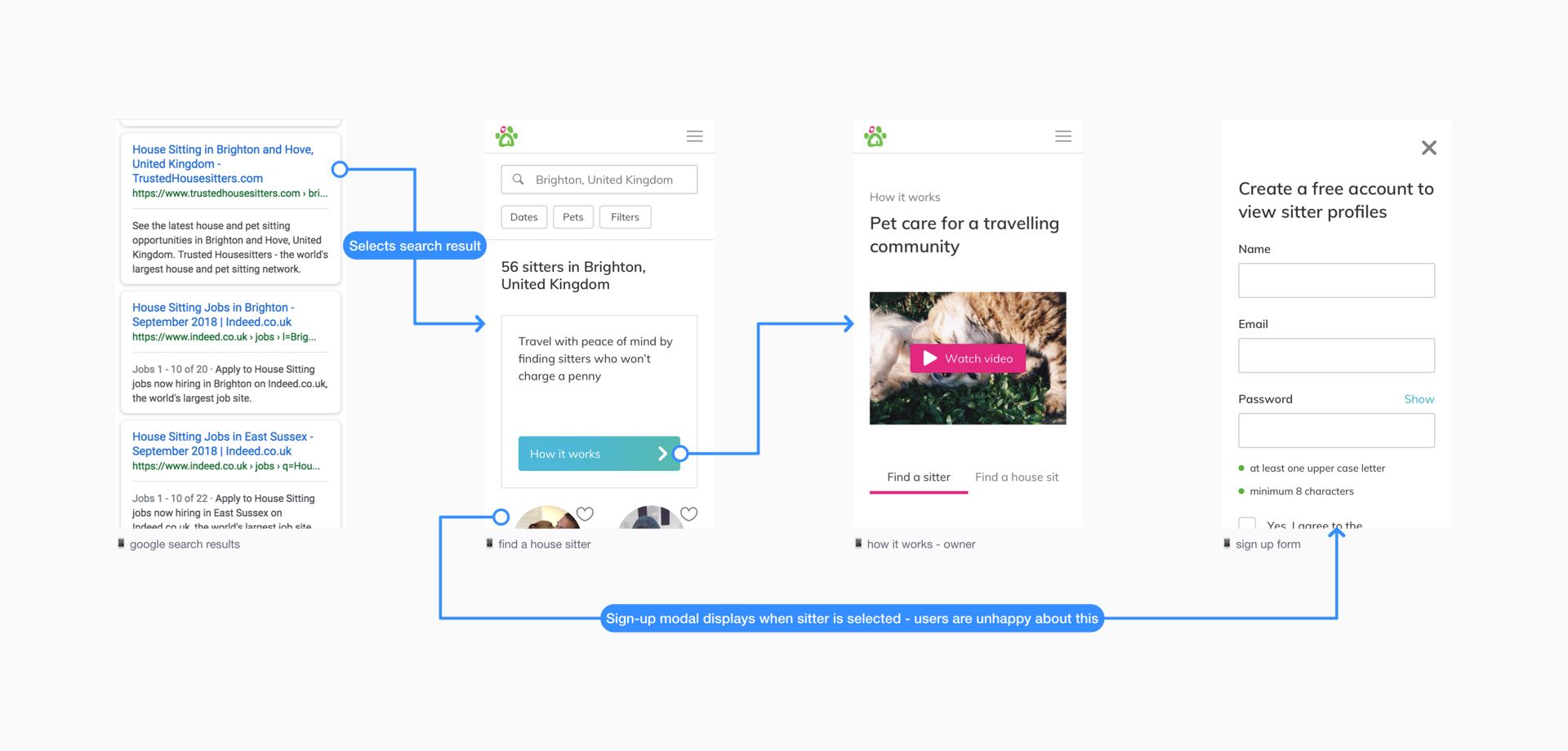
How might we ensure people feel they can trust our service and be comfortable letting strangers into their homes?
Directing users to information about our safety verifications and code of conduct
We believe that directing users to information about our safety verifications and code of conduct for first-time visitors will ensure people feel they can trust our service and be comfortable letting strangers into their homes.
The majority of usability research participants identified our service as safe or trustworthy and they would be willing to become a member.
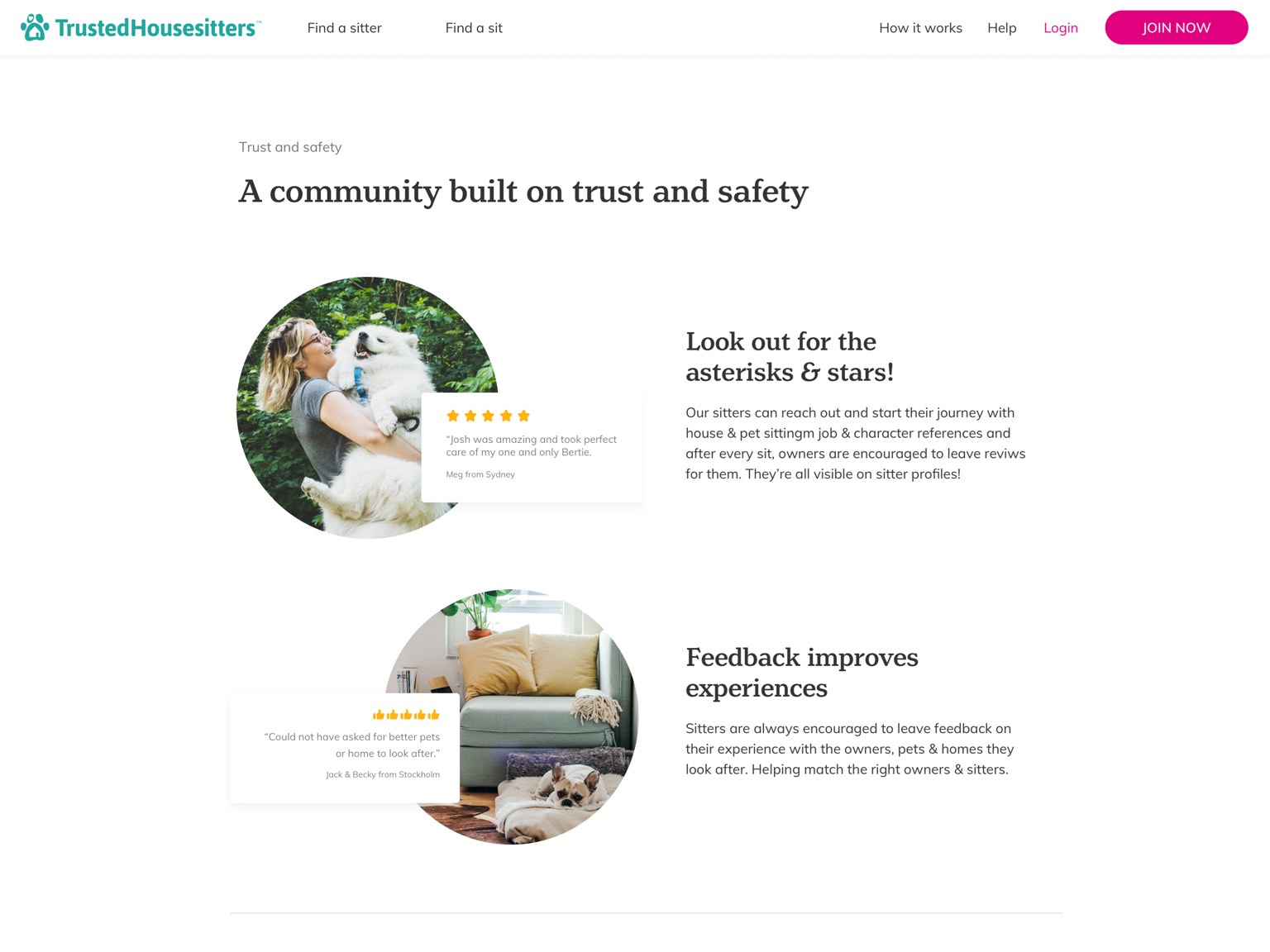
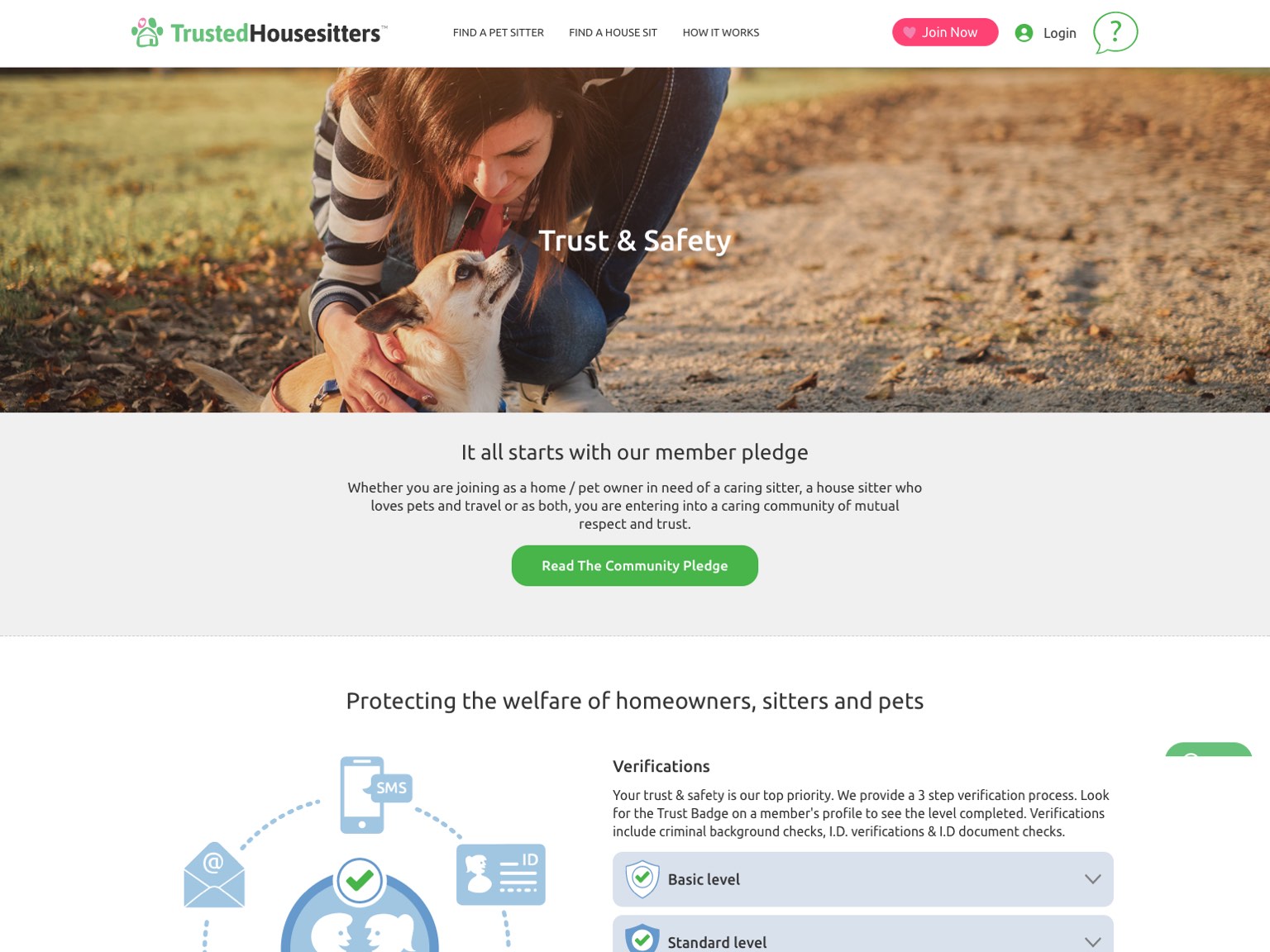
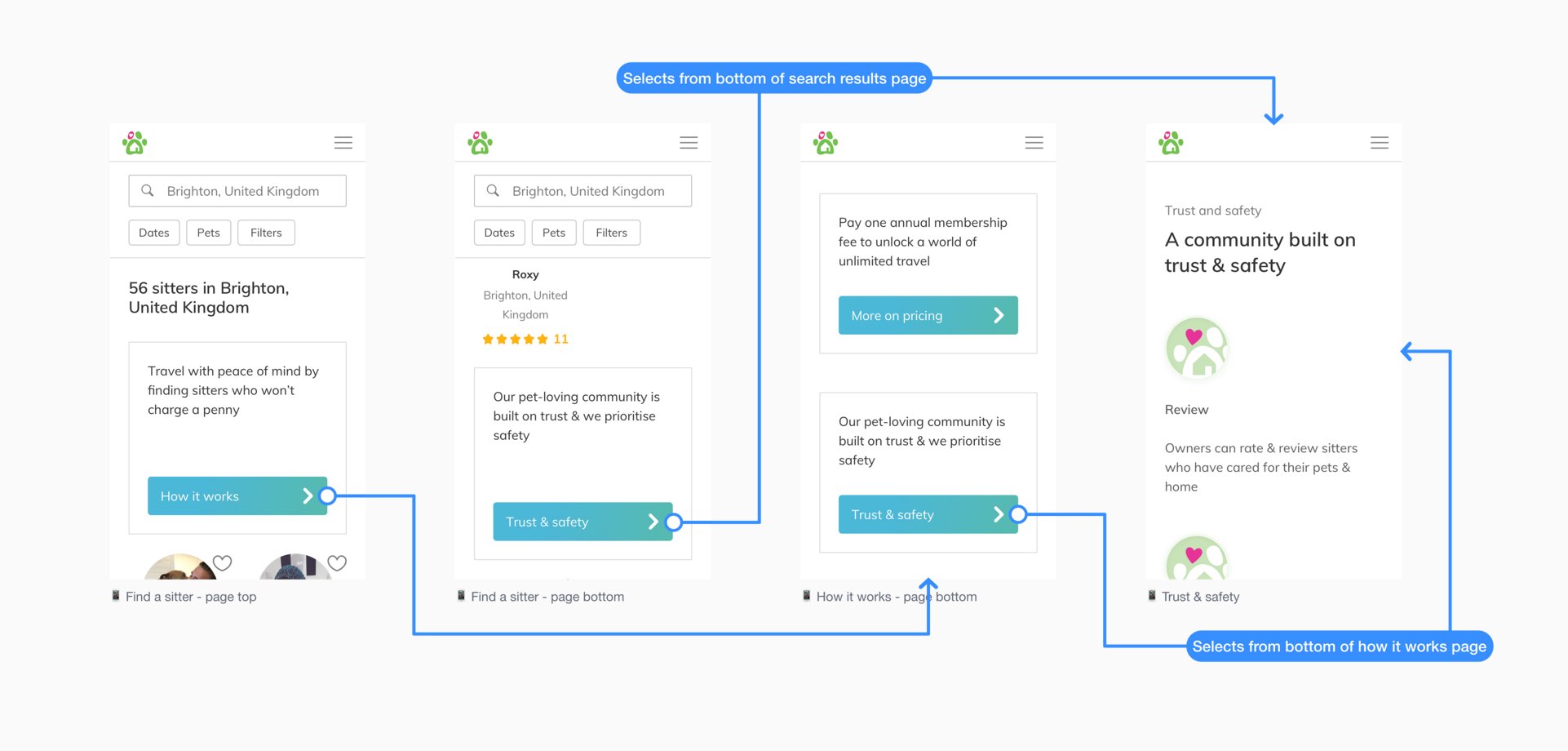
The solution areas helped drive acquistion and created a good foundation for future experiments. Feedback from customer service has been positive, with fewer questions asked about pricing, trust, and how it works.
Sign-up conversion rates are often seen as vanity metrics as they do not describe the relationship to overall product growth. To measure real impact, I would like to have tracked the results each solution had on straight through membership conversion and our north star metric pet sits completed.